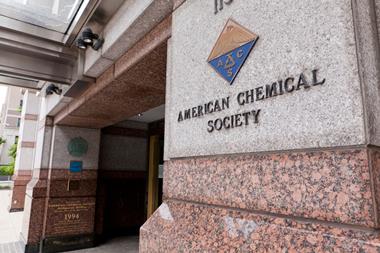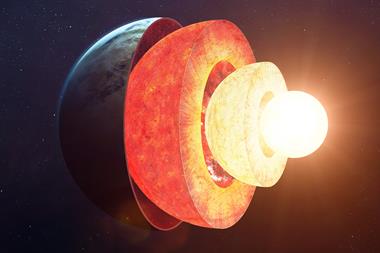Researchers have cracked the crystalline structure of an enigmatic phase of solid oxygen arising when the molecule is subjected to high pressure.
An international team of researchers has cracked a conundrum that has baffled scientists for years: they have elucidated the crystalline structure of an enigmatic phase of solid oxygen that arises when the molecule is subjected to high pressure.
Solid oxygen is known to form six distinct crystallographic phases, transforming variously between insulating, metallic, magnetic and superconducting states. One of the most intriguing phases is known as the epsilon phase, which is formed when the molecule is compressed at pressures above 10 GPa. Under these conditions, the oxygen crystals have a distinct dark red colour and strong infrared absorption.
The epsilon phase of oxygen was discovered nearly 30 years ago, but until now its structure remained unknown. Lars Lundergaard and colleagues from the Centre for Science at Extreme Conditions at the University of Edinburgh, together with co-workers from the Commissariat ? l’?nergie Atomique in France and the University of Ottawa in Canada, now report detailed x-ray diffraction observations on single crystals of epsilon oxygen created in a device called a diamond-anvil cell under pressures of 13-18 GPa.
The results shown that oxygen molecules aggregate into distinct groups of four to form eight-membered rhombohedral units, with each unit probably held together by weak chemical bonds.
’Structural data on the epsilon phase of oxygen has been determined previously, but only the symmetry of the crystal was known, not the positions of the molecules within the crystal,’ Paul Loubeyre, a member of the team, told Chemistry World. ’The crystal structure we observe is probably due to peculiarities of the electron cloud of the oxygen molecule.’
People had speculated that the eight-membered oxygen crystals could be analogous to the well-known S8 ring-shaped version of sulfur. However, the new results show this is not the case.
In an accompanying commentary, Burkhard Militzer and Russell Hemley of the Carnegie Institution of Washington, said that the results will have broad relevance to other materials that are placed under extreme pressure. ’There may be parallels between behaviour of epsilon-oxygen and the charge transfer activity observed in hydrogen at much higher pressure.’ They added that there was also experimental and theoretical evidence for clustering and formation of polyatomic phases in nitrogen under pressure. ’The challenge now is to carry out structural and theoretical studies in the higher pressure metallic and superconducting phases of oxygen.’
Simon Hadlington
![]() Comment at the Chemistry World blog
Comment at the Chemistry World blog
Read other posts and join in the discussion
References
LF Lundergaard et al., Nature, 2006, DOI: 10.1038/nature05175






No comments yet